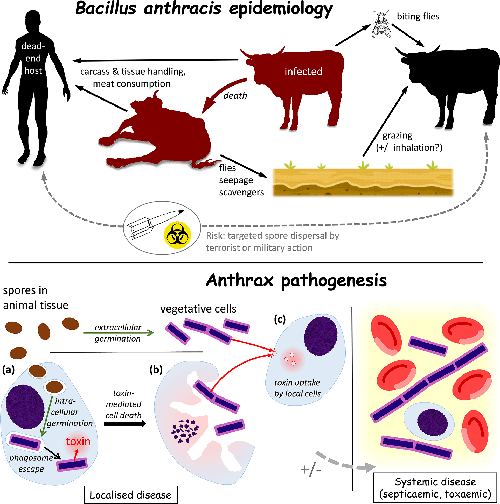
Full text loading...
 and Adrienne Mackintosh2
and Adrienne Mackintosh2
Principal routes of Bacillus anthracis infection and stages of anthrax pathogenesis, consistent with current understandings. Depending on the route of infection, germination of spores may happen in extracellular tissue fluid, or following phagocytosis (a). Successful infection of host cells leads to toxin-associated cell death and release of vegetative cells and toxin (b). Toxin binds and enters other host cells (c), including those of the immune system, disrupting function. In some cases this leads to systemic disease, which typically is fatal.
Bacillus anthracis has a wide host range among warm-blooded animals and causes the disease anthrax. This manifests in localized forms (skin, alimentary) and as septicaemia, the latter typically being fatal. Bacillus anthracis forms robust and long-lived endospores, which constitute the environmental phase of its lifecycle and are the key infective agents. Elaboration of plasmid-encoded binary toxin complex and a capsule are fundamental to pathogenicity. Epidemiology in animals is typified by prolonged environmental quiescence and acute systemic disease. Human disease is non-contagious and derives usually from contact with livestock or animal products, although military or terrorist dispersal of spores remains a threat.

Article metrics loading...

Full text loading...
References

